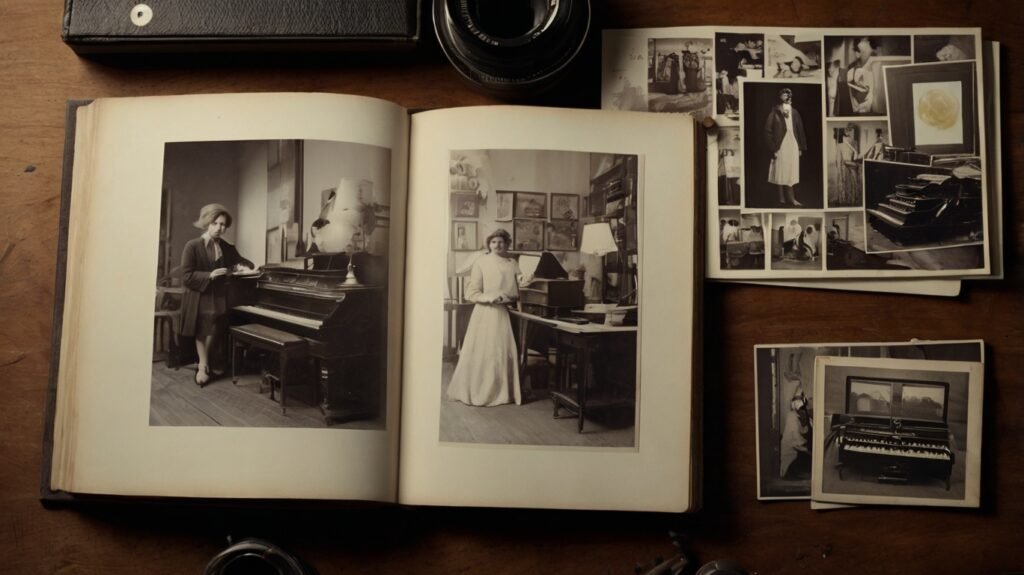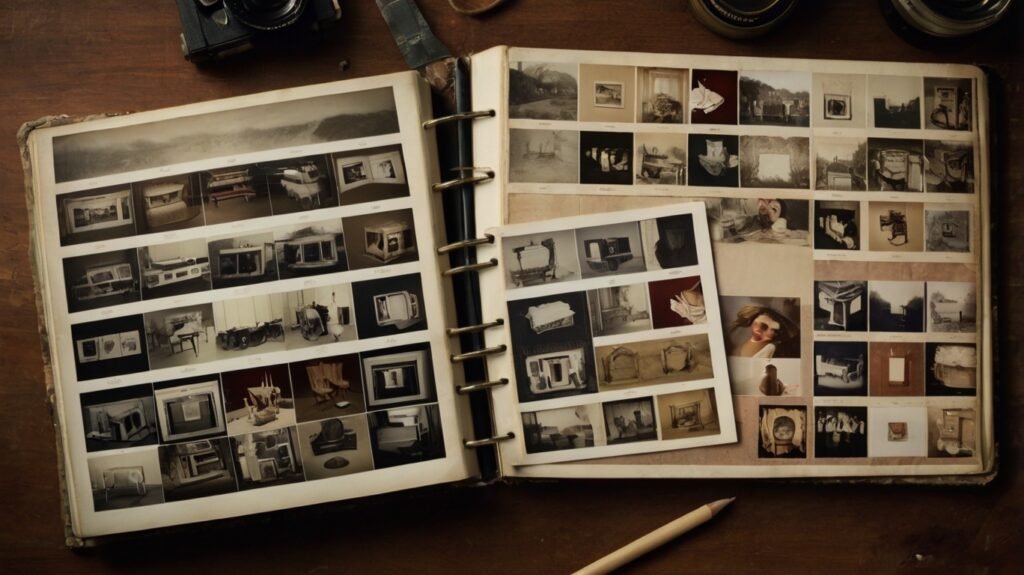Are you struggling with preserving cherished memories stored in old photo albums? In today’s digital era, it’s easier than ever to safeguard those precious images and bring them back to life through digitization and restoration. In this comprehensive guide, we’ll walk you through every step of how to digitize and restore old photo albums. Whether you’re an amateur photographer, a family historian, or simply someone who values the emotional weight behind each snapshot, this detailed post is designed to provide you with actionable insights, expert advice, and practical techniques to transform your physical photos into digital treasures.
With the primary focus on How to Digitize and Restore Old Photo Albums, we’ll delve into modern scanning techniques, essential tools, restoration software, and best practices for long-term digital preservation. Let’s begin this journey to rediscover and revitalize your photo albums!
Table of Contents
ToggleUnderstanding the Importance of Photo Preservation

Photographs aren’t just images; they’re windows into the past. They capture milestones, emotions, and the very essence of our personal and collective histories. Unfortunately, traditional photo albums are susceptible to damage from time, environmental factors, and mishandling. Digitizing them not only preserves them from physical decay but also makes them more accessible.
Why Digitize and Restore Old Photo Albums?
-
Safeguard Memories: Digital copies protect against loss from fires, floods, or accidental damage.
-
Enhanced Sharing: Digitized photos can be easily shared with family and friends across platforms.
-
Improved Quality: Restoration techniques can correct aging issues like fading, scratches, and discoloration.
-
Long-Term Storage: Digital files can be backed up and stored in the cloud, reducing the risk of complete loss.
-
Increased Accessibility: Digital archiving allows for quick search and retrieval, making memories instantly accessible.
Imagine being able to relive your childhood moments or share vintage family portraits with loved ones at the click of a button. With advancements in digital imaging technology, there’s never been a better time to consider digitizing and restoring your old photo albums.
Getting Started: Tools and Equipment Needed
Before diving into the process of digitization and restoration, it’s crucial to assemble the right tools. Investing in quality equipment can make a significant difference in the final results.

Essential Tools for Digitization
-
Flatbed Scanner: Choose one with high resolution (at least 600 dpi) to capture fine details. Flatbed scanners are ideal for delicate or bound albums.
-
Digital Camera with Macro Lens: For albums that are too delicate to scan directly, a high-resolution digital camera and macro lens setup can be an alternative.
-
Photo Scanner Apps: Several mobile apps have been designed for quick scanning. However, for best results, a dedicated scanner is highly recommended.
-
Computer: A reliable computer with sufficient storage space and photo editing software is essential for managing your digitized files.
Equipment for Digital Restoration
-
Image Editing Software: Tools like Adobe Photoshop, GIMP, or specialized photo restoration software can help repair damage, adjust colors, and remove blemishes.
-
Graphics Tablet (Optional): For those who prefer hands-on editing, a graphics tablet can offer precision and ease of use.
-
External Hard Drive: To store large files securely, consider using an external hard drive or cloud storage for backup.
Quick Tips for Choosing Equipment
-
Quality Over Cost: High-resolution scanning equipment yields better details and longevity.
-
Ease of Use: Look for equipment with user-friendly features and reliable customer support.
-
Reviews and Recommendations: Refer to expert reviews and user testimonials to find the best tools within your budget.
Investing in the right tools sets the stage for a seamless digitization process, ensuring that each image is captured and preserved in the highest quality possible.
Step-by-Step Guide: Digitizing Your Photo Albums
Digitizing old photo albums involves a series of methodical steps. Below is a comprehensive guide that breaks down the process, allowing even beginners to achieve professional-looking results.
1. Preparation
Before scanning, ensure your photos and albums are properly prepared.
-
Clean Your Albums: Gently dust off the photos using a soft, lint-free cloth.
-
Inspect for Damage: Look for signs of wear such as tears, stains, or discolorations. Note any areas that might require extra attention during restoration.
-
Organize Chronologically: Consider arranging photos by date or event. This step not only provides context during restoration but also streamlines file organization later on.
2. Scanning the Photos
Accurate scanning is the foundation of successful digitization.
-
Resolution Settings: Set your scanner to a high resolution (300-600 dpi) for optimal quality.
-
File Format: Save scanned images in a lossless format like TIFF if you plan to edit them extensively, or JPEG for easier sharing.
-
Batch Scanning: If your scanner supports it, use batch processing to speed up the process.
-
Manual Adjustments: Adjust brightness, contrast, and color settings as needed for each scan to ensure clarity.
3. Editing and Enhancing Images
Once you have your digital copies, the next step is restoring them.
-
Crop and Rotate: Trim any unwanted borders and correct the image orientation.
-
Color Correction: Use editing software to balance colors, restore faded hues, and improve contrast.
-
Remove Imperfections: Utilize tools like the healing brush or clone stamp to eliminate scratches, dust, and blemishes.
-
Sharpening: Carefully apply sharpening filters to enhance details without overdoing it.
4. Saving and Organizing Your Files
Proper file management is vital for long-term preservation.
-
Naming Conventions: Use descriptive file names that include dates and relevant keywords.
-
Folder Structure: Organize your photos into folders based on themes, events, or dates.
-
Backup Solutions: Regularly back up your files on external drives or cloud services to prevent data loss.
5. Digital Archiving and Sharing
After editing, it’s time to integrate your newly digitized albums into your digital life.
-
Create a Digital Album: Use online platforms or dedicated software to create digital albums or slideshows.
-
Social Sharing: Consider sharing restored photos on social media or family blogs, keeping privacy settings in mind.
-
Print Options: Quality restored images can be printed for display or further archival storage.
Each step of the process requires patience and attention to detail, but the rewarding outcome is a timeless archive of memories that will be preserved for future generations.
Digital Restoration Techniques and Best Practices
While the digitization process captures your photo images, restoration techniques breathe new life into them. Here we explore various methods to address common issues such as fading, scratches, and damage.
Common Challenges in Photo Restoration
-
Faded Colors: Over time, photos lose vibrancy. Digital restoration allows for color enhancement and balance adjustments.
-
Physical Damage: Scratches, tears, and dust can obscure details. Specialized restoration tools are used to seamlessly repair these imperfections.
-
Discoloration: Exposure to light and environmental factors can lead to discoloration. Techniques like selective color correction are useful for reviving the original appearance.
-
Blurriness: Some photos may suffer from a loss of focus. While digital tools have limits, careful application of sharpening and noise reduction filters can improve clarity.
Techniques for Effective Restoration
-
Manual Corrections:
Utilize editing tools (e.g., healing brush in Photoshop) to manually correct small areas of damage. This method offers precision but may be time-consuming for extensive repairs. -
Automated Restoration Features:
Many modern editing software packages include automated features that analyze and correct common issues. These are useful for quick fixes, though manual adjustments are often necessary for a natural look. -
Layered Editing:
Work with multiple layers in your editing software. This allows you to make non-destructive edits that you can revert or adjust later on. -
Consulting Expert Tutorials:
There is a wealth of online tutorials and expert advice available on platforms such as YouTube and specialized blogs. Learning new techniques from professionals can make a significant difference in your restoration quality.
Balancing Authenticity and Enhancement
Restoration is about finding the right balance between preserving the original character of a photo and enhancing its appearance. Here’s what to consider:
-
Avoid Over-Editing: Strive to maintain the original essence and historical context of the image.
-
Subtle Adjustments: Aim for subtle enhancements that bring out details without making the photo appear overly modern.
-
Regular Breaks: Editing for long periods can lead to fatigue. Taking breaks ensures you maintain fresh eyes and judgment throughout the process.
Success Stories: Real-Life Restoration Projects
Consider the story of an amateur historian who spent weeks restoring a faded, century-old family portrait. By combining manual corrections with automated software features, they were able to revive the image, bringing a sense of warmth and history back into their family archives. Such experiences highlight the potential of digital restoration to transform neglected images into cherished heirlooms.
Managing and Organizing Your Digital Files
Once you have digitized and restored your photo albums, proper organization becomes key to maintaining them over time.

Creating a Logical File Structure
-
Hierarchical Folders:
Organize photos in nested folders—by decade, year, event, or even by family member. A clear folder structure makes it much easier to locate specific photos later on. -
Descriptive File Names:
Use meaningful file names that include dates, locations, and brief descriptors (e.g., “1985_Grand_Family_Reunion.jpg”). -
Metadata Tagging:
Utilize metadata tags to add additional context to your files. This can include keywords, geographic information, or other relevant details that aid in searchability.
Backup and Long-Term Storage
-
Multiple Backup Solutions:
Always have more than one backup solution. Use both physical external drives and cloud-based services to safeguard your digital files. -
Regular Updates:
Schedule periodic checks and backups to ensure your files are up to date. Technology evolves, and file formats may become obsolete; staying current prevents future access issues. -
Data Management Tools:
Consider using digital asset management software that can help organize, tag, and automate backups of your digital photo collection.
Sharing and Enjoying Your Digital Legacy
The end goal of digitizing and restoring your old photo albums is not just preservation, but also enjoyment. Here are a few ideas for sharing your revitalized photos:
-
Online Galleries:
Create online galleries or digital scrapbooks where family members can view and comment on your restored images. -
Printed Albums and Collages:
Use your restored images to create printed photo books or collages. This hybrid approach combines the best of both worlds: digital convenience and physical presence. -
Social Media Integration:
Share select images on social media platforms while preserving high-resolution versions for personal archives.
Organizing your digital files correctly ensures that your family history remains accessible and appreciated for years to come.
Frequently Asked Questions (FAQs)
1. What is the best resolution to scan old photos for digitization?
For most photos, a resolution of 300-600 dpi is recommended. This range offers sufficient detail for restoration and enlargement without creating unnecessarily large file sizes.
2. How do I choose between a flatbed scanner and a digital camera for digitizing albums?
A flatbed scanner is ideal for capturing delicate, bound albums with excellent detail. However, if the album is too fragile or bound tightly, using a digital camera with a macro lens can be a safer alternative.
3. Can I use free editing software for photo restoration?
Yes, free software like GIMP can be effective for photo restoration, although premium options like Adobe Photoshop may offer more advanced tools and features.
4. How often should I back up my digitized photos?
It’s best to back up your files immediately after digitization and then schedule regular updates—monthly or quarterly—to ensure your files remain safe and current.
5. Is it possible to restore severely damaged photos using digital tools?
While digital restoration can significantly improve the appearance of damaged photos, highly deteriorated images may require professional help. However, many minor damages like scratches, fading, and discoloration can be effectively corrected through careful restoration techniques.
6. What file format is best for long-term digital storage?
For long-term storage, using a lossless format like TIFF is ideal, as it retains the highest quality of the original image. For everyday use and sharing, JPEG is commonly used due to its manageable file size.
7. How do I ensure my digital photos comply with SEO practices?
Include descriptive filenames, metadata tags, and relevant keywords throughout your digital content. This not only organizes your files but also improves their discoverability online.
8. Are there any common mistakes to avoid during restoration?
Yes, avoid over-editing, which can alter the historical essence of your photos. Also, refrain from cutting corners on scanning resolutions or backup practices, as these decisions impact long-term quality and preservation.
Conclusion and Next Steps
Digitizing and restoring old photo albums is more than just a technical process—it’s about reconnecting with your past and preserving a legacy for future generations. By following the comprehensive guide above, you can transform fragile, aging albums into vibrant digital memories that can be easily shared and enjoyed.
To recap, we explored:
-
The importance of photo preservation and how digital conversion can safeguard your memories.
-
The necessary tools and equipment for both digitization and restoration.
-
Detailed, step-by-step instructions on scanning, editing, and organizing your photos.
-
Advanced restoration techniques to correct fading, damage, and other common issues.
-
Best practices for managing and sharing your digital files with family and friends.
Take a moment to reflect on the personal value behind each photograph. Whether you’re preserving a century-old family portrait or a simple snapshot from a recent event, each image tells a story that deserves to be kept alive. Start implementing these techniques today to ensure that your personal history is preserved in the best quality possible.
If you have any questions or need further assistance, feel free to leave a comment below. Your memories are worth preserving—don’t wait until it’s too late!
